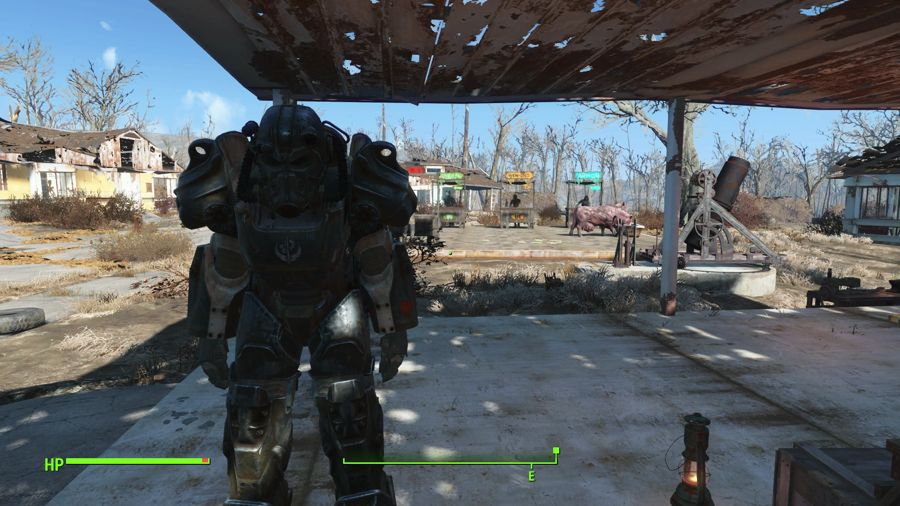

Geralt of Rivia is a witcher, a professional monster slayer born of long days of training and experimental mutations. However, you must make sure to properly equip this warrior. You’ll need more than swords and crossbow bolts, as Geralt possesses numerous skills he can learn and utilize to make his quests easier.
The first skill tree you have is the Combat tree. This tree features 20 various skills you can acquire. The points you put into this area of the skill tree will benefit your sword attacks and crossbow attacks, as well as your ability to do things like parry arrows, commit better counterattacks, and even disable a monster’s special ability. Noted by the color red, these skills are most useful for players who wish to hold their own, without relying on the power of Geralt’s Signs.
This particular set of skills revolves around upgrading and improving Geralt’s use of Signs, or magic. There are a total of 5 base Signs the witcher makes use of, and each one holds a different purpose. These spells can be upgraded using the additional 20 options featured in this particular area of the character’s expertise. The base signs are Axii, Quen, Yrden, Igni, and Aard.
We’ll go over these Signs in more details below. This class of skills, denoted by the color blue, should be used by players looking to focus more on deceiving enemies in conversation, as well as people who wish to be able to use the magic more effectively in battle.
For every warrior and wizard there is at least one potion maker. This skill tree focuses on improving and mastering the brewing of potions, the preparing of oils, creating bombs, extracting mutagens, and dealing with the toxicity these mutagens and potions create. Do not focus on this skill tree alone. Instead, pair it with the Combat or Signs skillsets in order to help Geralt become a master witcher in fighting or deception. The Alchemy skills are shaded green for easy identification.
Unlike the other skill trees, this particular area of the character menu only offers up to 10 improvements. These things range from increasing Geralt’s Vitality to dealing more damage with the crossbow, to changing how the witcher’s Adrenaline Points work. Although you likely won’t need all of these skills, we highly suggest checking them out as you level up, as they are exceptionally useful for pairing with other skill trees. These skills are denoted by their plain white color.
The Witcher 3: The Beast of White Orchard
The Witcher 3: White Orchard - Missing in Action
The Witcher 3: Velen - Bloody Baron, Family Matters
The Witcher 3: Ciri's Room, Fake Papers
The Witcher 3: Novigrad - Broken Flowers, Get Junior
The Witcher 3: Skellige - The King is Dead, Nameless
The Witcher 3: The Battle of Kaer Morhen
The Witcher 3: Bald Mountain, Imlerith Battle
The Witcher 3: White Orchard Contracts - Devil by the Well
The Witcher 3: Velen Contracts - Jenny 'O the Woods, Missing Brother
How to Earn Infinite Crowns in The Witcher 3
The Witcher 3 - How to Play Gwent
The Witcher 3 - All Places of Power Locations
The Witcher 3 Bestiary, Monster and Boss Battle Guide
The Witcher 3 - Carnal Knowledge and Romance
Now that you know more about the four skill trees, it’s time to dive into mutagens. Mutagens are mutations that allow improvements like increased Sign intensity, higher Vitality, and additional Attack Power. Once Geralt reaches level 28, he can have up to 4 mutagens equipped at one time. There is a catch to these, however, as each Mutagen is connected to three slots for skills. This is where the color-coding comes in.
As you travel through the Northern Realms, from Velen to Novigrad, and onward, you’ll come across three different types of mutagens: Red, Blue, and Green. Each one of these types connect to a specific skillset, and when paired with those color skills, the witcher receives a 100 percent bonus to that mutagen for each connected skill. This means if you equip a blue mutagen with three skills from the Sign tree, you’ll receive a 300 percent bonus to that mutagen’s effect. Mutagens placed next to non-matching colors do not increase or decrease the mutagen’s effect. If you’re having problems finding more mutagens, head out and slay a few monsters, as this is where you’ll find the items.
Now that you understand the skills better and know how mutagens affect them, it’s time to talk about Geralt’s magic, or Signs. As we mentioned above, there are 5 types of Signs that Geralt can use, and each one plays differently into your situations. These Signs use Geralt’s Stamina when they are cast, which means you’ll only be able to make use of them in small spurts during battle, unless you have upgraded them using the Signs skill tree. The following is a breakdown of the Signs and what they do.
Aard – This sign is especially useful for knocking enemies backwards, as it sends out a telekinetic force. It can also be used to knock down crumbling bricks and remove other obstacles from Geralt’s path.
Axii – The Axii Sign allows Geralt to disorient and at times take control of his opponents. It is exceptionally useful during conversations, as players can use it to delude their enemies into letting them past without a fight; we’ve used it many times to avoid long-winded battles. Be careful when trying to use it in dialogue around multiple enemies, as you can’t charm them all at once.
Igni – One of the most used Signs in the witcher arsenal, Igni casts a shroud of flames outward from the witcher’s hand. It is useful for battle, removing poisonous gas clouds, and weakening monsters like Werewolves and Foglets. It is a staple attack for many of our battles, and we suggest you use it as often as you need to.
Quen – Although we haven’t spent much time with this particular Sign, Quen is still one of the best things to keep at the ready. When cast, it creates a shield around the caster, and can be upgraded to explode upon breaking. This skill can mean the difference between life and death when dealing with creatures like Foglets.
Yrden – The magic barrier of a witcher’s magic, Yrden casts a powerful trap along the ground, which slows enemies that enter it. Casting this spell when dealing with multiple enemies will allow players to flank and score critical attacks against their opponents. We found it useful when dealing with enemies with shields, as we were able to quickly dodge around and attack these adversaries in their most vulnerable areas.
Now that you’re more versed on the Signs and the different skills that await you in The Witcher 3: Wild Hunt, it’s time to dive deep into the story surrounding Geralt of Rivia. Luckily we’re one step ahead, and you can find all the information you need to defeat every enemy, slay every monster, and complete every quest in The Witcher 3: Wild Hunt Walkthrough.



